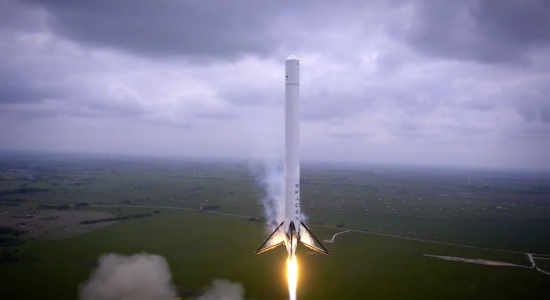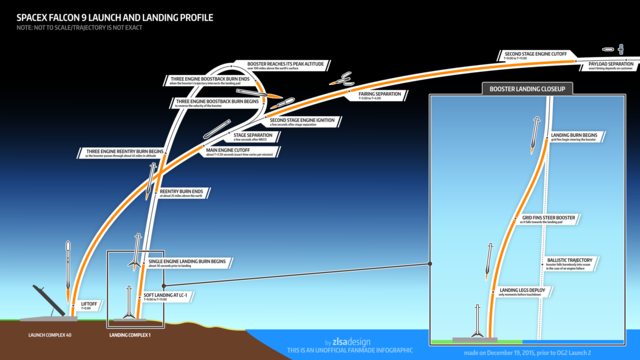
In a universe of wrong headed decisions, President Obama was credited by Ramparts in 2013 with recognizing the power of competition and free markets at least once in his Presidency, and allowing private industry to attempt to restore America’s capacity to lead in space. In 2009, the President re-ordered the space budget to allow private industries to have their attempt at being a successor to the Space Shuttle for low earth orbit transport. The critics contained some legendary explorers such as Jim Lovell and Neil Armstrong, who vociferously objected to the many future concepts being out of the control of a unifying agency like NASA. Their doubts were informed; successful rocket programs like USA’s Saturn and Russia’s Soyuz had been the exclusive provence of governments and private concepts were conceptual only.
NASA, the government agency that had led a revolution of manned space exploration that culminated in multiple landings on the moon in the early 1970s, had spent the next forty fumbling with various near earth projects with reduced budgets and increasing risk adverse decisions. The Space Shuttle was NASA’s only follow through on innovative projects, but it proved budget devouring and unstable, with a statistical catastrophic risk assessment of 1 in 60 flights proving uncomfortably true, with loss of the Challenger in 1986 and the Columbia in 2003 prominent in the 135 flights. Having built five vehicles estimated at over a billion dollars apiece, 2 were lost for a total vehicle failure rate of 40% and a mission failure rate of 1.5%, easy enough to sink any other experimental craft. Added to this ominous statistic was the reality that this re-usable spacecraft proved exceedingly expensive to re-use, with a planned for 50 flights a year turning out to be closer to 4 flights a year, resulting in an astronomical cost for the life of the program of over a billion dollars a flight. Beautiful as it was, such costs accompanying such danger in a craft limited to a 150-600 miles in space maximum range was not feasible to continue beyond its thirty years of existence.
The answer in 2009 was not clear to anyone – except Elon Musk, and a progressively competitive group of visionaries. Innovation has always been the province of visionaries and Musk is the most visionary of visionaries, having created Pay Pal and Tesla as two examples of visions ‘people’ said could never be successful. His most audacious leap was a company called SpaceX and he sees space as not only a commercial venture but the source of mankind’s eventual salvation. If Earth is potentially not sustainable someday, then Mars may be where we evolve as a sustainable species. Such over the horizon thinking has not kept him from decerning the answers to some of the current most vexing issues in space travel and industry, dominated most by its overwhelming cost. The SpaceX view has been to achieve affordable and reproducible private solutions to the science problems of space, and he has fashioned an enviably American sheen to the innovation. In developing the moon project, the consideration of re-usable boosters proved impractical, and success was eventually achieved through massive rocketry, rockets in multiple stages capable of only single use. Each rocket was felt to require building from scratch with new parts as the old ones were disposed of in the previous flight. In 2015 dollars Musk noted a multi-stage rocket capable of escaping the atmosphere required at minimum 60 million dollars of single use expenditure, with 70% of the cost involved in losing the first stage booster. Musk identified this as the fatal flaw in any commercial enterprise as only governments can possibly absorb such waste. He from the start considered reusability foundational and the SpaceX rocket creations have been ultimately designed to solve the reusablity problem.

Given the massive forces at work on a rocket it was thought that the idea that the boosters could be recovered and reused was a pipe dream. The first attempts to land the booster seemed to prove out the difficulty:
The team at SpaceX was not deterred; nor could they afford to be. Unlike a government agency with few timetables and minimal budget limitations, SpaceX had real private competition. Jeff Bezos, a billionaire with deeper pockets than Musk and every bit the visionary, succeed in November in doing the improbable with his Blue Origin rocket booster, returning it intact to Earth.
Certainly the comparisons between the two rockets weren’t apples to apples. Bezos’ rocket was designed for an atmosphere launch of people to 62 miles, with a lifting power of 100,000 pounds of thrust and a top speed of Mach 1.5. SpaceX Falcon 9 is designed for low earth orbit above 100 miles, achieves over a million pounds thrust, and reaches speeds above Mach 5.5. From such speeds it needs to return in a different trajectory without collapsing, right itself and control decent and land an infinitely heavier, thinner, and taller rocket full of explosive fuel. Orders of magnitude more difficult, but after all, Blue Origin had achieved a landing and the visionary Musk was potentially second best. But through such challenges, real progress takes place.
On December 21st, 2015 Musk realized the space dream that had existed from the days of Jules Verne:
And now the game is on. Private innovation has cracked the code of re-usablity with Musk annoucing the Falcon 9 sustained no damage with re-entry and is ready to be used again. The possiblity of a platform tens of millions cheaper than traditional vehicles for space makes a profit possible, and a profit drives more smart companies into the mix.
Thanks to Elon Musk, innovation is bursting out all over, and America is back in space to stay.